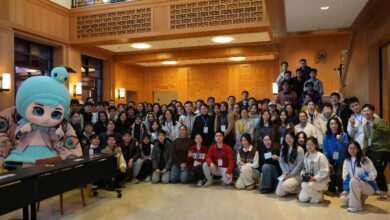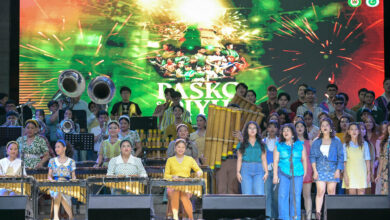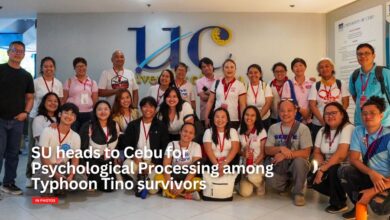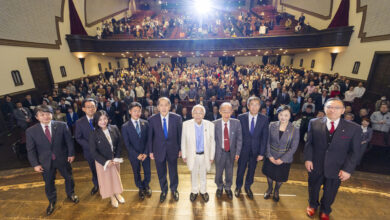Reflecting on 80 Years of Atomic Art Research and Its Impact at Kyushu University
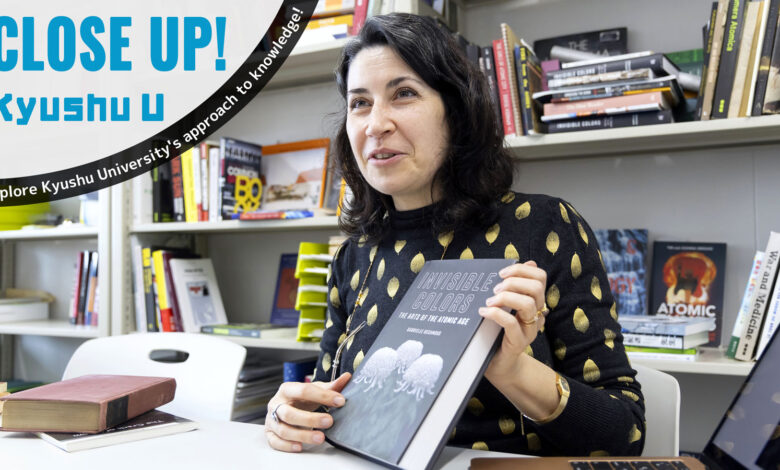
As Japan observes the 80th anniversary of the conclusion of World War II, discussions surrounding peace education and the legacy of atomic bombings remain essential. Associate Professor Gabrielle Decamous from Kyushu University’s Faculty of Languages and Cultures is examining diverse cultural perspectives on nuclear power, atomic weapons, and the overarching theme of world peace through the medium of art.
Exploration of Atomic Art
Decamous’s research focuses on “atomic art,” a term that encompasses artworks representing themes related to nuclear energy and weaponry. This genre includes various forms of media such as painting, photography, film, and literature. In Japan, atomic art has garnered significant attention, especially in the context of the bombings of Hiroshima and Nagasaki and the Fukushima disaster.
Global Context and Urgency
The current global landscape, marked by conflict and the threat of nuclear escalation in light of Russia’s invasion of Ukraine, adds urgency to these discussions. Decamous notes a growing international interest in atomic art in response to current events, remarking that while atomic art remains relatively underexplored in Japan, it has gained traction abroad, prompting important dialogues and presentations throughout Europe.
Historical Background
The relationship between nuclear technology and the art world dates back to the Trinity Test in 1945. Decamous highlights the duality of nuclear technology, which embodies both humanity’s aspirations for scientific progress and its fears of military destruction. This complexity is reflected across artistic expressions, posing challenges for artists who seek to articulate narratives about the atomic age.
Influence of Hiroshima
Decamous’s commitment to this research deepened after visiting the Hiroshima Peace Memorial Museum, which significantly influenced her understanding of atomic art. Initially viewing the subject from a Western perspective, she recognized the importance of including the narratives of “hibakusha,” the survivors of atomic bombings. This realization led her to focus on how these lived experiences are depicted in art.
Contributions to the Field
Her contributions to the field include the book *Invisible Colors: The Arts of the Atomic Age*, published in 2019. This work analyzes the artistic discourse surrounding nuclear events, frequently highlighting marginalized voices, particularly those of hibakusha. Decamous aims to bridge cultural understandings of atomic art between Eastern and Western contexts, emphasizing the human suffering and resilience that often overshadow scientific narratives.
Engagement with Students
Additionally, Decamous engages with students at Kyushu University through courses covering English, contemporary issues, and philosophy, fostering critical discussions on peace and nuclear matters. She collaborates with Professor Masa Higo, who organizes peace symposiums and study trips to sites of significance in nuclear history.
Recognizing Hibakusha Narratives
The recent acknowledgment of the Japan Confederation of A- and H-Bomb Sufferers Organizations with a Nobel Peace Prize has renewed interest in hibakusha narratives. This recognition has sparked further discussions on nuclear disarmament and humanitarian considerations surrounding the consequences of war.
Ongoing Dialogue for World Peace
As Decamous reflects on her research and the role of art in conveying the experiences of atomic survivors, she emphasizes the pressing need for ongoing dialogue about world peace. Kyushu University continues to promote a wide range of research focused on war and peace, aligning with the evolving narratives of an increasingly diverse and inclusive era.
(Source: Kyushu University)

